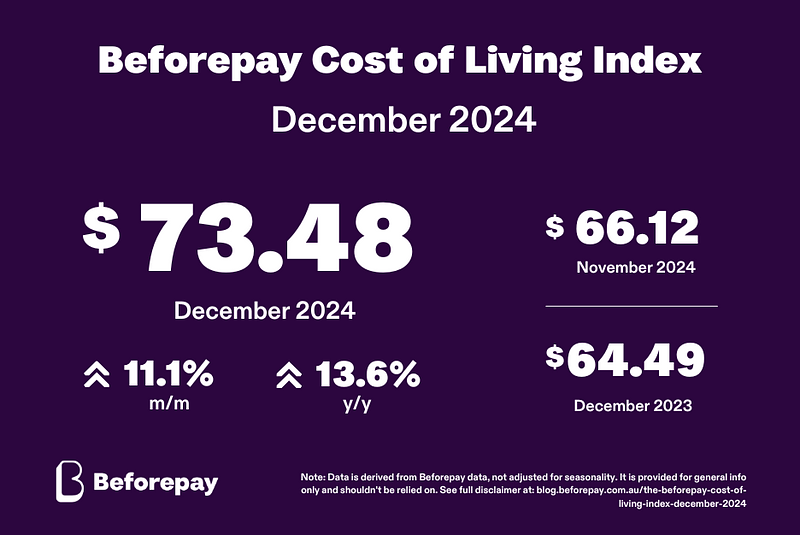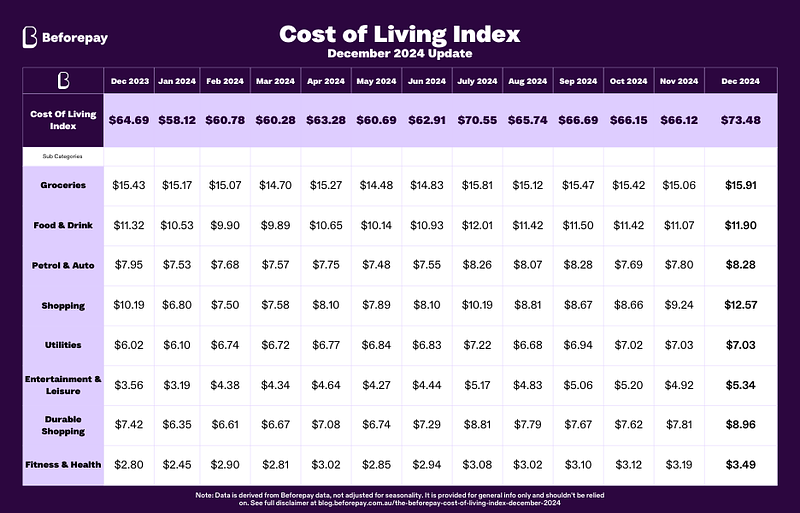Australian spending surged in December 2024 to 13.6% year-on-year to $73.48, compared to $64.49 in December 2023, according to new data from the Beforepay Cost of Living Index.
The figure also indicates growth of 11.1% month-on-month, up from $66.12 in November, reflecting the combined impact of inflation and festive season expenses. The index noted that while the increase can be attributed to seasonal uplift, the month-on-month increase is significantly higher compared to a 4% increase for the same period last year.
Spending increased across all key categories in December 2024, with shopping the largest contributor according to the Beforepay Cost of Living Index.

Daily average spend for the category jumped 36% to $12.57 from $9.24. Durable shopping followed, rising 14.7% to a daily average spend of $8.96 in December, up from $7.81.
The Index also reported that the daily average spend also rose across other discretionary categories: fitness and health up 9.4% to $3.49 from $3.19, entertainment and leisure up 8.5% to $5.34 from $4.92, and food and drink up 7.5% to $11.90 from $11.07.
Additional costs associated with festive meals and travel were reflected in increases across non-discretionary categories – groceries jumped 5.6% month-on-month to a daily average spend of $15.91 from $15.06, while petrol and auto rose 6.2% to $8.28 from $7.80. Utilities remained unchanged from November 2024 at $7.03.

Holiday shopping dominated December spending, with the daily average spend for the category jumping 36% to $12.57 from $9.24.
“December is a month where household budgets are tested, balancing the celebrations and travel of the season with rising costs,” Jamie Twiss, CEO of Beforepay, said.
“The year-on-year increase we’re seeing highlights how inflation continues to impact Australians’ daily expenses. As we look ahead to 2025, this is a critical moment for households to recalibrate their financial priorities and build strategies to navigate both persistent inflation and future challenges.”
The December 2024 Beforepay Cost of Living Index offers insights derived from over 430,000 users, providing a detailed view of consumer behaviour across essential and discretionary spending categories.
